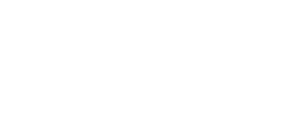 |
 |
 |

|
So as to increase flexibility manufacturing is distributed to production islands in the model smart factory of the Technology Initiative. Industrie
|
|
 |
SPECIALIST ARTICLE NR. 2/2018
GLASS INDUSTRY 4.0 – PRODUCERS, PROCESSORS AND FINISHERS ARE GETTING EVER SMARTER.
The 4th Industrial Revolution will be one theme at glasstec 2018
The Connection of Machines
The term Industry 4.0 has been on everyone’s lips for some time now. It is synonymous with digitalisation and connection of the complete industrial value chain. After dramatic developments at beginning of the industrial age such as the introduction of the steam engine, assembly line and later IT, the 4th Industrial
|

|
Posted 6 February 2018
|
Share this:
|
|
Revolution is now marked by more and more smart factories. This change does not stop short of glass production, processing and finishing either. Many exhibitors at glasstec 2018 in Düsseldorf will therefore focus on the theme of Industry 4.0 and exhibit interesting developments.
Incidentally, the term “Industry 4.0” was already invented as early as in 2011 on the occasion of the Hannover Fair.
The truly revolutionary thing about this trend, however, is the digitalisation and connection of the entire industrial value chain – from order entry and upstream supplies orders to manufacturing and complete logistics. And when experts talk of the Internet of Things, this also means that the connection, of course, is no longer limited to your own “four factory walls”. All your suppliers and customers are also incorporated into this virtual network. This makes it possible to trigger order processes immediately and to state precise delivery times for even the smallest of batch sizes. Because both your material inventories and those of your suppliers are checked almost simultaneously to verify and/or lay down manufacturing timetables. In such a flexible production environment machines also plan their own maintenance intervals scheduling them in production breaks and over the weekend. Down times are to be avoided if possible.
|
|
|
|
|
|
|
Support by Policy-Makers
Although the changes in companies are gradual, the glass sector is still undergoing fundamental change. Fortunately, policy-makers are not leaving companies “in the lurch” in this process, as Prof. Dr. Detlef Zühlke, Chairman of the Board of the technology initiative SmartFactory KL e.V., stresses: “Ongoing education demonstrates to companies time and again the tremendous opportunities that digitalisation holds for them. It is in particular the SMEs so critical for Germany that need and receive support here.”
Early 2016 saw the first SME-4.0 Centres of Expertise being established and funded by the German Ministry of Economics. Their task is to accompany small and medium-sized companies in the implementation of ideas in the field of Industry 4.0 and digitalisation. These centres are also designed to adapt workers’ skills to the new challenges.
Many exhibitors at glasstec in Düsseldorf will pick up on the Glass Industry 4.0 theme and present their approaches in this field.
|
|

|

|

|
glasstec, 23 – 26 October 2018 in Düsseldorf
International Trade Fair for glass – Production, Processing, Products
23 – 26 October will see the proven No. 1 glass trade fair – glasstec 2018 – being held in Düsseldorf. The focus of glasstec 2018 will be on interactive glass in the flat glass segment and on energy-efficient and emission-reducing glass manufacturing technologies for container glass. For exhibitors the most important visitor target group is the glass industry, followed by mechanical engineering, architecture and construction as well as German skilled craftspeople, and more and more craftsmen from abroad are also attracted.
The last glasstec 2016 registered 40,105 visitors from 121 countries. 1,237 exhibitors from 52 countries presented their latest products, machines, developments and visions to this trade audience. What makes this trade fair especially attractive for exhibitors is the high number of decision-makers among trade visitors. Three quarters of them come from executive to top management and attended glasstec with concrete intentions to buy or on a quest for new suppliers. Trade visitors deem the high-quality contacts, the packed demonstration of innovative power and the visionary outlook on future developments and fields of business very valuable.
The latter is ensured by the special show glass technology live in Hall 11 – organised by a university cluster for the first time. This includes the Technical Universities of Darmstadt, Delft, Dresden and Dortmund. In four glass cubes innovative solutions from the fields of Interactive Façades / Display Glasses, Energy and Performance, Structural Glass (solid glass / thin glass) will be exhibited here alongside pioneering technologies. In Hall 10 the conferences pooled under the umbrella brand glasstec conference will link theory and practice in appropriately themed lectures.
The Author
Matthias Fischer has worked as a freelance journalist and textbook author since 2009. He looks back on more than 25 years of experience in the industry and also headed a specialist construction magazine as a Vice-Editor-in-Chief for several years.
www.glasstec.de
|
|

On the Industry 4.0 line a flexible transport system forwards every product to be finished to the relevant further processing station.
|
|
|
|
|
|
|
|
|
|


